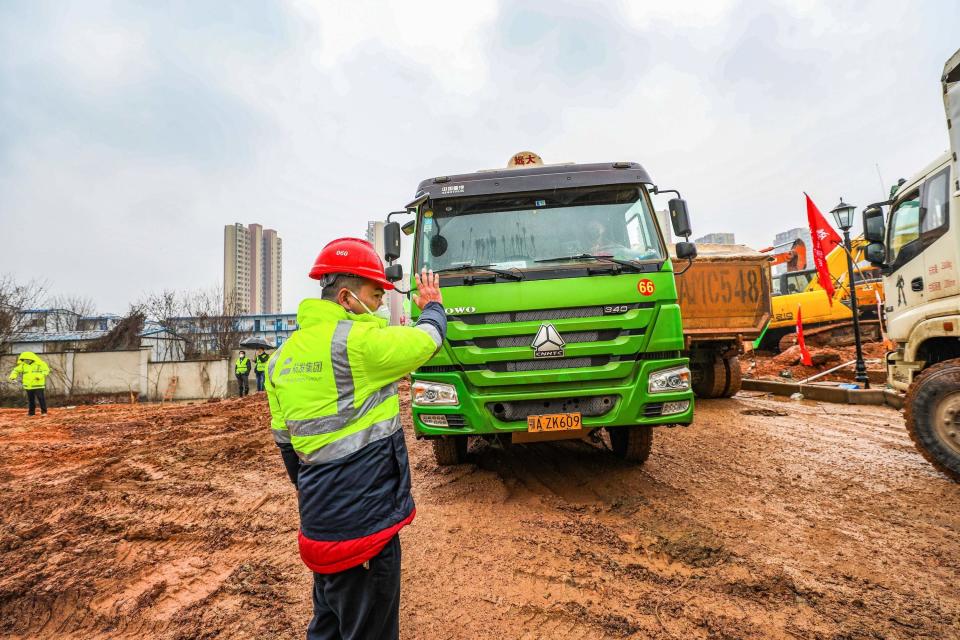China’s Building a Hospital in 10 Days—This Is What the Design Must Get Right
Over the past few decades, China has built some of the most revolutionary architecture in the world. But what they plan to do now—complete a 1,000-bed hospital in a mere 10 days—might be among their most ambitious feats to date. And the most important. As we publish this story, several parts of China have been under quarantine due to dire concerns over the spreading of the coronavirus. As of Thursday morning, there have been over 170 confirmed deaths from the outbreak, with over 7,700 confirmed cases of affected individuals, making the situation so severe that Chinese president Xi Jinping has labeled it a "grave situation" (even Shanghai Disneyland has shut down, while Starbucks has closed 2,000 branches throughout China). Russia has signaled they may close their 2,600 mile border with China.
In Wuhan (the epicenter of the virus), dozens of cranes are currently digging a 269,000-square-foot plot of land that will soon become a hospital. This isn't the first time China has had to build medical infrastructure in the face of a viral threat. The design of the new hospital will be based on that of Xiaotangshan Hospital, which was erected within a week in Beijing during the SARS outbreak of 2003 (SARS infected more than 8,000 people and killed nearly 800). As with Xiaotangshan, the Wuhan Huoshenshan Hospital is being built with prefabricated materials.

CHINA-HEALTH-VIRUS
Typically, prefabricated architecture is used to minimize building cost and waste. But neither of those reasons compares to the biggest benefit of prefabricated construction: speed. The goal is to have the hospital completed on Monday, February 3. Though the building is being called a hospital, it certainly won't be a traditional one. "The hospital is intended to isolate people with the coronavirus," says James Crispino, global health and wellness practice area leader and principal at Gensler. The global architecture firm has designed dozens of hospital and health care facilities around the world, including a design for Singapore’s Community Hospital at Yishun (Singapore is one of the countries where people have been diagnosed with the virus). "Since that's its only purpose, it is not a hospital in the conventional sense," says Crispino. "This hospital will have assessment and triage capabilities, some imaging capabilities, a clinical laboratory, a pharmacy, and isolation rooms—but not much else."

CHINA-HEALTH-VIRUS
According to Crispino, patient isolation, following strict protocols, and rigorously maintained air flow will be key to the hospital's success. "Airborne infectious diseases are best controlled by caring for patients in isolation rooms, ideally each with an anteroom for gowning and hand-washing. What's more, airflow is also key in this type of facility. The patient isolation rooms must have air pressure that is negative to the adjacent spaces and corridors. That is to say, air flows into the rooms containing airborne agents, rather than out of the rooms and distributing those agents."
It's also important to distribute the air around the room in the right manner. "Air must be introduced to the room from the ceiling above the patient and exhausted low along the wall around the perimeter of the room," Crispino adds. "Air filtration in these systems is very important and they often employ HEPA filtration." (HEPA, which stands for High Efficiency Particulate Air, refers to filtration that captures 99.97% of the particles in the air passing through the filter.)
To date, there are five cases of the coronavirus in the United States (but thankfully, no deaths). Nevertheless, while we've never faced an infectious disease crisis in the U.S. that has exceeded the capacity of our existing hospitals, the capability to design a hospital at record speed is certainly possible. "In the U.S., we do have the talent, tools, and technologies to do this if need be," says Crispino.
Originally Appeared on Architectural Digest


